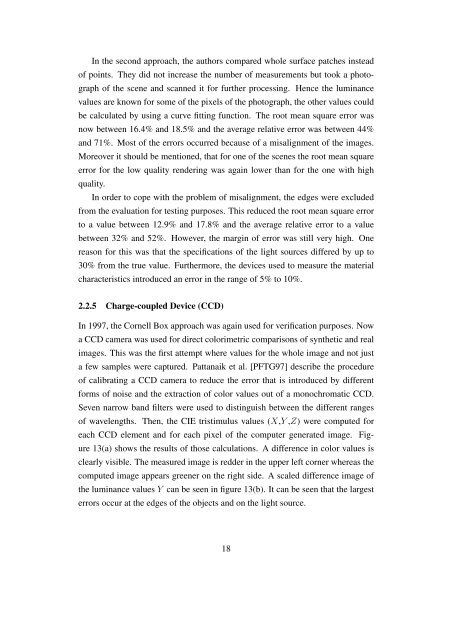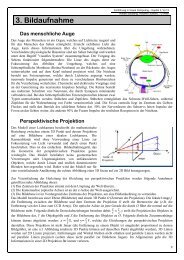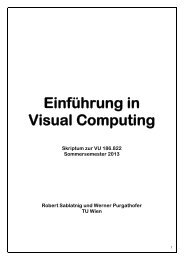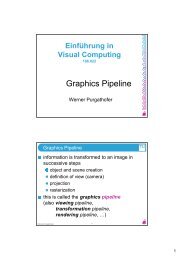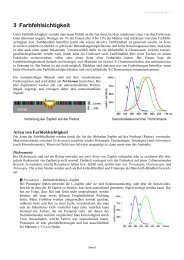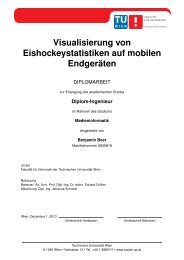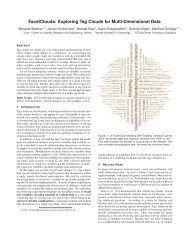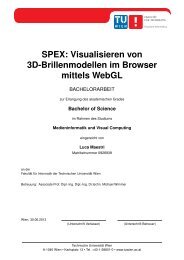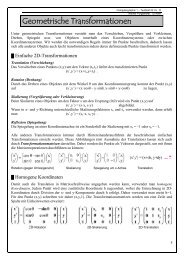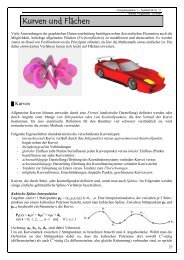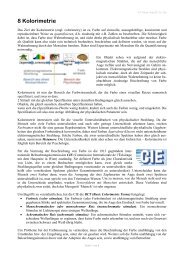Usability of Digital Cameras for Verifying Physically Based ...
Usability of Digital Cameras for Verifying Physically Based ...
Usability of Digital Cameras for Verifying Physically Based ...
Create successful ePaper yourself
Turn your PDF publications into a flip-book with our unique Google optimized e-Paper software.
In the second approach, the authors compared whole surface patches instead<br />
<strong>of</strong> points. They did not increase the number <strong>of</strong> measurements but took a photo-<br />
graph <strong>of</strong> the scene and scanned it <strong>for</strong> further processing. Hence the luminance<br />
values are known <strong>for</strong> some <strong>of</strong> the pixels <strong>of</strong> the photograph, the other values could<br />
be calculated by using a curve fitting function. The root mean square error was<br />
now between 16.4% and 18.5% and the average relative error was between 44%<br />
and 71%. Most <strong>of</strong> the errors occurred because <strong>of</strong> a misalignment <strong>of</strong> the images.<br />
Moreover it should be mentioned, that <strong>for</strong> one <strong>of</strong> the scenes the root mean square<br />
error <strong>for</strong> the low quality rendering was again lower than <strong>for</strong> the one with high<br />
quality.<br />
In order to cope with the problem <strong>of</strong> misalignment, the edges were excluded<br />
from the evaluation <strong>for</strong> testing purposes. This reduced the root mean square error<br />
to a value between 12.9% and 17.8% and the average relative error to a value<br />
between 32% and 52%. However, the margin <strong>of</strong> error was still very high. One<br />
reason <strong>for</strong> this was that the specifications <strong>of</strong> the light sources differed by up to<br />
30% from the true value. Furthermore, the devices used to measure the material<br />
characteristics introduced an error in the range <strong>of</strong> 5% to 10%.<br />
2.2.5 Charge-coupled Device (CCD)<br />
In 1997, the Cornell Box approach was again used <strong>for</strong> verification purposes. Now<br />
a CCD camera was used <strong>for</strong> direct colorimetric comparisons <strong>of</strong> synthetic and real<br />
images. This was the first attempt where values <strong>for</strong> the whole image and not just<br />
a few samples were captured. Pattanaik et al. [PFTG97] describe the procedure<br />
<strong>of</strong> calibrating a CCD camera to reduce the error that is introduced by different<br />
<strong>for</strong>ms <strong>of</strong> noise and the extraction <strong>of</strong> color values out <strong>of</strong> a monochromatic CCD.<br />
Seven narrow band filters were used to distinguish between the different ranges<br />
<strong>of</strong> wavelengths. Then, the CIE tristimulus values (X,Y ,Z) were computed <strong>for</strong><br />
each CCD element and <strong>for</strong> each pixel <strong>of</strong> the computer generated image. Fig-<br />
ure 13(a) shows the results <strong>of</strong> those calculations. A difference in color values is<br />
clearly visible. The measured image is redder in the upper left corner whereas the<br />
computed image appears greener on the right side. A scaled difference image <strong>of</strong><br />
the luminance values Y can be seen in figure 13(b). It can be seen that the largest<br />
errors occur at the edges <strong>of</strong> the objects and on the light source.<br />
18


